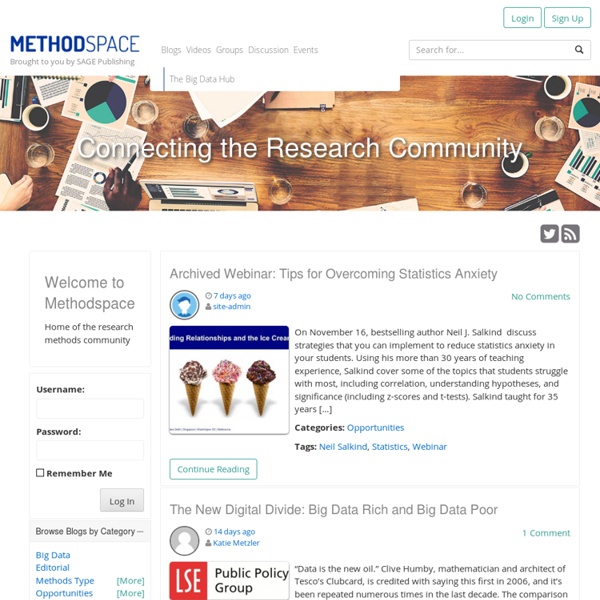StatNotes: Topics in Multivariate Analysis, from North Carolina State University, Public Administration Program
Looking for Statnotes? StatNotes, viewed by millions of visitors for the last decade, has now been converted to e-books in Adobe Reader and Kindle Reader format, under the auspices of Statistical Associates Publishers. The e-book format serves many purposes: readers may cite sources by title, publisher, year, and (in Adobe Reader format) page number; e-books may be downloaded to PCs, Ipads, smartphones, and other devices for reference convenience; and intellectual property is protected against piracy, which had become epidemic. Click here to go to the new Statnotes website at . Or you may use the Google search box below to search the website, which contains free e-books and web pages with overview summaries and tables of contents. Or you may click on a specific topic below to view the specific overview/table of contents page.
Lalisio - The International Knowledge Network
Fiabilidad (psicometría)
En el campo de la psicología, la educación y la investigación social, la fiabilidad (también llamada técnicamente confiabilidad) es una propiedad psicométrica que hace referencia a la ausencia de errores de medida, o lo que es lo mismo, al grado de consistencia y estabilidad de las puntuaciones obtenidas a lo largo de sucesivos procesos de medición con un mismo instrumento. Es necesario aclarar que la fiabilidad no es una propiedad de los tests en sí mismos, sino de las interpretaciones, inferencias o usos específicos que se hagan a partir de los datos y medidas que estos proporcionan. Asimismo, no puede hablarse de la fiabilidad en términos absolutos; sí cabría hablar del grado de fiabilidad que puedan presentar los instrumentos de medida en un contexto de aplicación determinado. A partir de la variabilidad en las puntuaciones encontradas tras una serie de mediciones repetidas puede determinarse el índice de precisión, consistencia y estabilidad de un instrumento. donde
science videos, tutorial, documents, courses, papers
SPSS Learning Module: Using SPSS functions for making and recoding variables
SPSS Learning Module Using SPSS functions for making and recoding variables 1. Introduction SPSS has a wide variety of functions you can use for creating and recoding variables. We will explore three kinds of functions: mathematical functions, string functions, and random number functions. These functions have the same general syntax:
SEMNET Information
The Structural Equation Modeling Discussion Network Researchers who study or apply structural equation modeling methods may be interested in an electronic mail network called SEMNET. Operating over the Internet, SEMNET is an open forum for ideas and questions about the methodology that includes analysis of covariance structures, path analysis, and confirmatory factor analysis.
Interactive Mediation Tests
© 2010-2014,Kristopher J. Preacher Calculation for the Sobel test: An interactive calculation tool for Mediation tests Kristopher J.
Mediation (David A. Kenny)
Some might benefit from Muthén (2011). Note that both the CDE and the NDE would equal the regression slope or what was earlier called path c' if the model is linear, assumptions are met, and there is no XM interaction affecting Y, the NIE would equal ab, and the TE would equal ab + c'. In the case in which the specifications made by traditional mediation approach (e.g., linearity, no omitted variables, no XM interaction), the estimates would be the same. Here I give the general formulas for the NDE and NIE when X is an intervally measured based on Valeri & VanderWeele, (2013). If the XM effect is added to the Y equation, that equation can be stated as
Quadratic Regression Calculator
What is Quadratic Regression? Quadratic regression is a form of multiple linear regression since the equation y = ax² + bx + c is linear in the variables a, b, and, c, which are the undetermined coefficients of the quadratic equation in x.
Mplus Home Page




A good starting point for research methods is Methodspace . It is an online network for researchers, from students to professionals, to network and share research, resources - and to debate. Methodspace users have free access to selected journal articles and book chapters on the site. - See more at: by raviii Aug 30